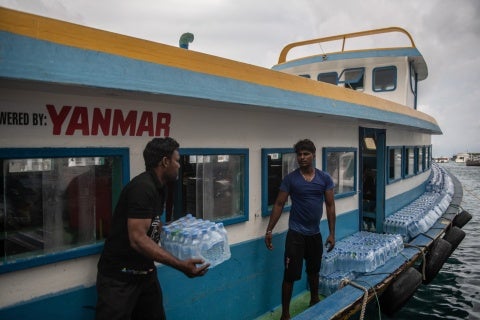In the idyllic archipelago of the Maldives, beyond the luxury resorts and turquoise waters, a pressing crisis unfolds. Remote island communities are grappling with severe water shortages, a situation exacerbated by climate change and infrastructural shortcomings.
A recent report by Human Rights Watch (HRW) highlights the plight of these marginalized communities. Despite governmental efforts to secure climate adaptation funds, many residents on outer islands remain without reliable access to safe drinking water. The core issues? Inadequate community consultation, poor project execution, and economic barriers.
Climate Change: A Looming Threat
The Maldives, comprising 1,192 low-lying islands, is among the nations most vulnerable to climate change. Rising sea levels, saline intrusion, and unpredictable rainfall patterns have intensified water scarcity. Traditional freshwater sources like rainwater and groundwater are increasingly compromised, leaving communities dependent on costly desalinated water or emergency shipments.
Infrastructure Projects Falling Short
In 2017, the Maldivian government, with support from the Green Climate Fund and the United Nations Development Programme, launched a $28.2 million initiative to improve water access on 49 outer islands. The project aimed to implement Integrated Water Resource Management (IWRM) systems, combining desalination, rainwater harvesting, and groundwater recharge.
However, HRW’s findings reveal significant shortcomings. On islands like Kanditheem and Nolhivaranfaru, residents report that water projects were hastily executed and remain incomplete years later. Essential components, such as water testing facilities, are non-operational, and many households still lack piped water connections.
Voices from the Islands
Community members express deep concerns over water quality and affordability. In Kanditheem, up to 60% of residents rely on bottled water due to distrust in the piped supply. Similarly, in Nolhivaranfaru, newly built homes remained without water connections for over two years, forcing inhabitants to use contaminated groundwater.
A local council member from Nolhivaranfaru lamented, “It’s been more than two years since people moved into the row houses, and they still don’t have water connections.” Such delays not only undermine public trust but also pose serious health risks.
Economic Strains and Agricultural Impacts
The financial burden of accessing clean water is significant. Many families cannot afford the high costs associated with desalinated water. Agricultural workers, particularly banana farmers in Kanditheem, face the dilemma of using saline groundwater for irrigation or ceasing cultivation altogether. One farmer noted, “If the groundwater becomes too saline, we won’t be able to afford desalinated water for irrigation. This will destroy our crops and income.”
Call for Inclusive and Sustainable Solutions
HRW urges the Maldivian government to prioritize community engagement in planning and implementing water projects. Ensuring transparency, regular maintenance, and affordable access are crucial steps toward sustainable solutions. Moreover, international donors and climate finance providers must collaborate closely with local authorities to address these systemic issues effectively.
A Nation at a Crossroads
The Maldives stands at a critical juncture. While it has been a vocal advocate for global climate action, domestic challenges threaten its resilience. Addressing water scarcity with urgency, inclusivity, and sustainability is not just a matter of infrastructure—it’s a matter of survival for its island communities.
For more information on the Maldives’ water crisis and HRW’s report, visit HRW’s official website.




